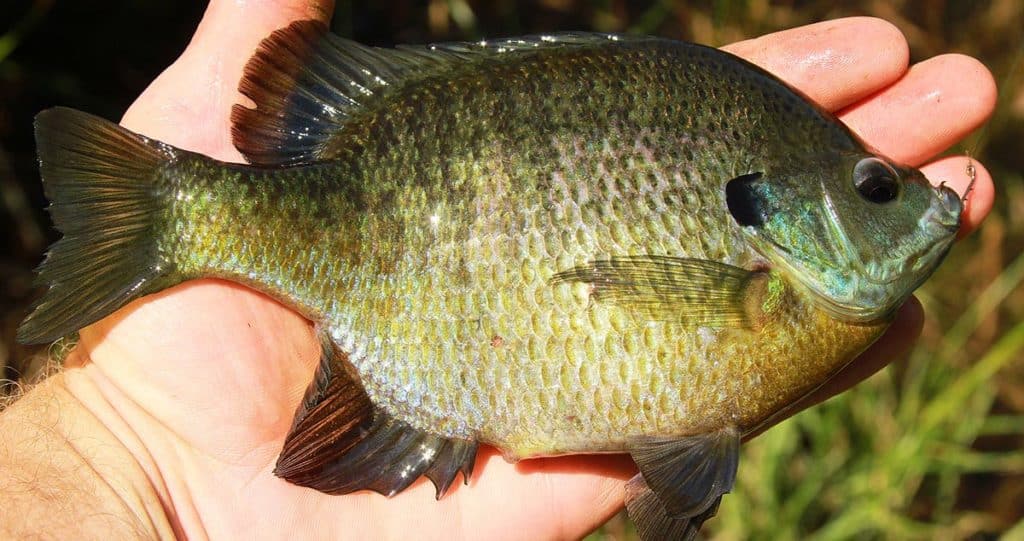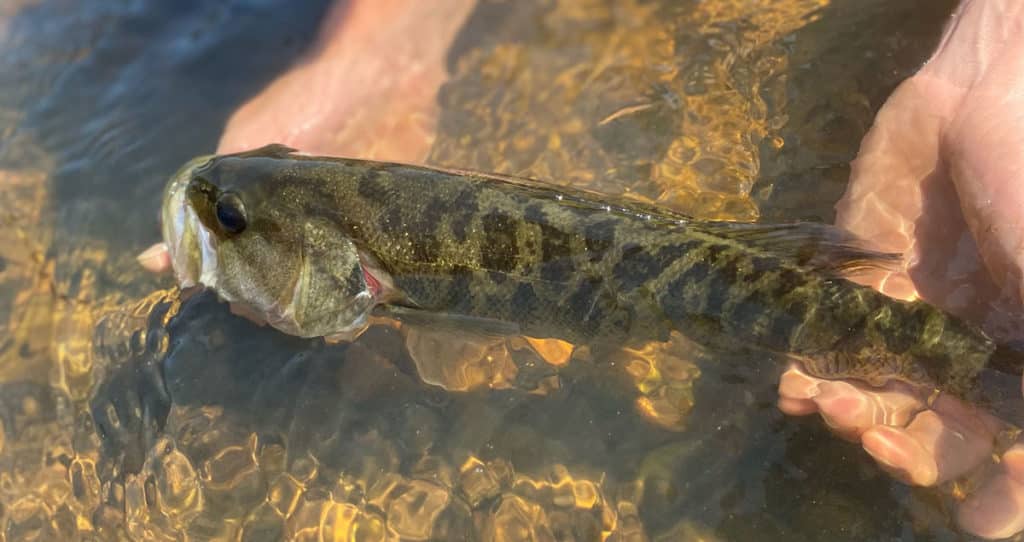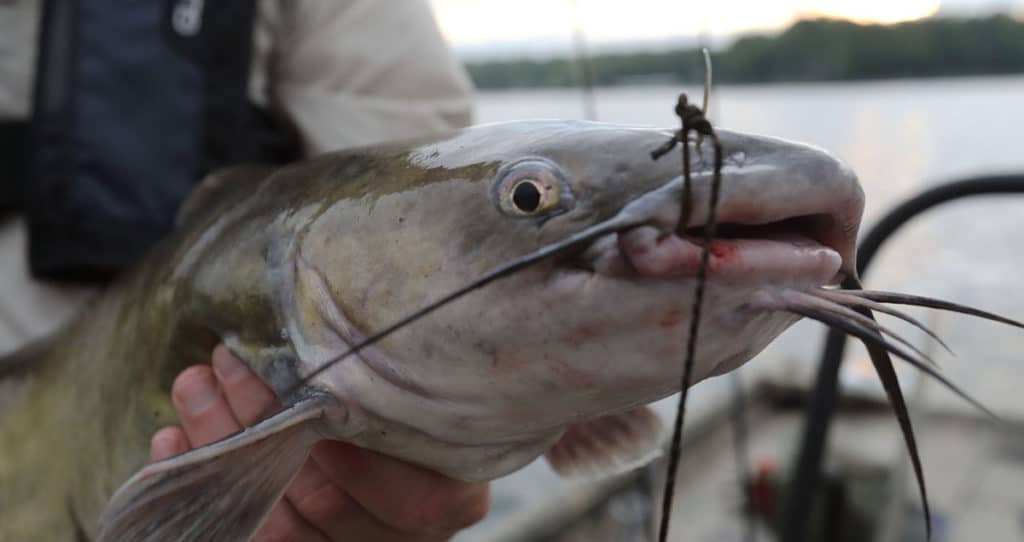Whether you’re brand new to fishing or hoping to shake the rust off after a long winter, bluegill are the perfect fish species to target. They have high populations, are fairly easy to land, and they are delicious to eat! Plus, you don’t need any advanced gear to target or land them.
Locating Bluegill by Season
Bluegill live in many freshwater lakes, rivers, and streams across the United States. They’re warm water fish, so they don’t thrive in spring-fed streams or high-altitude bodies of water. Generally, they need bodies of water that are below 5,000 feet in elevation.
In the water, bluegill are found in different areas and different depths depending on the time of year. Here’s a quick look at where to target bluegill by time of year.
Spring
In the early spring, bluegill will generally be in 5-15 feet of water moving fairly slowly. They’re coming off of a long winter and aren’t fully recovered from those challenging conditions. They’re getting as close to the surface since these water temperatures are going to warm the fastest. They’ll spend time near rocks and logs in order to protect themselves from large predators.
As the spring progresses, they begin the spawning process, so they are moving towards their beds in 3 to 7 feet of water. These beds are near sections of water with sand and gravel bottoms. This can be the best time of year to catch big bluegill!
Summer
Once summer hits, bluegill are moving deeper. The water temperatures are warming, and they’re eager to get to the deep and cool water. As they move deeper, they know they’re more susceptible to predators, so they hug as much structure as possible.
Fallen trees, boulders, docks, and even weed beds make for great hiding places. They still need to feed, but they don’t want to venture far into open water where they’ll likely become a meal for a bass or pike.
Their tendencies aren’t overly different from many other freshwater fish in their tendencies to desire comfortable water temperatures and structure. They’ll stay in cooler water until the fall temperatures hit.
Fall
In the early fall, bluegill will actually move a bit shallower because they know that food is an absolute necessity. They’re trying to find as much food as possible before the winter hits, so they move up into the shallower water to find insects, crustaceans, and a variety of other foods that are available to them.
As late fall hits, they begin retreating to deep water. In the colder months, the surface water is what cools first, so deep water is where fish will find their warmth. They’ll go to 20-30 foot deep water and begin to wait out those winter months.
Winter
Bluegill will congregate with one another in the winter months and live in 15-20 feet of water. These water temperatures are comfortable, and food is also available in these depths. They’ll continue to sit near structures as much as they can. Larger fish in the water are still hungry, and bluegills become an easy target.
Bluegill Diet
Bluegill aren’t overly picky in their diet. They want easy meals that quickly fill them up. Since they often swim in schools, they’ll find food and congregate near it for as long as possible. They aren’t ferocious hunters, so easy access to food is a priority.
Vegetation
Bluegills are known to eat aquatic plant life. Algae and a variety of other plants are always on their menu. Since vegetation is the easiest thing for them to access, they often eat it whenever they can. Plus, they congregate near structures. Under water, structure is susceptible to plants growing on and around it, so it makes for an ideal situation for bluegill.
Insects
Insects are also another common food for bluegill to eat. Whenever you hear a “pop” sound on the surface of the water, it’s likely a bluegill eating an insect that’s sitting on the surface of the water. Dragonflies, grasshoppers, beetles, ants, and even mayflies are all insects that bluegill like to eat.
They’ll eat insects in the nymph and larvae stages as well. When they aren’t prioritizing feeding on the surface, they’ll eat near the bottom and feast on any insects that are growing and morphing into the adult stage. Nymphs are another easy target. They aren’t going to put up much of a fight, so bluegills can always guarantee on them.
Crustaceans
Small crustaceans like snails and smaller crayfish are other common food choices for bluegills. Their mouths aren’t huge and they don’t have overly sharp gill plates, but they’re able to break down some of those smaller crustaceans that are commonly found in fresh water.
Fish and Fish Eggs
Minnows and fish eggs are some personal favorites for most bluegills. Whenever fish are in the spawning process, bluegill are likely nearby and hoping to eat as many eggs as they can possibly find. These are easy meals and do a good job of filling them up.
Small minnows are also a priority for bluegill. Almost all types of minnows are easy for bluegill to eat and target, so if you’re able to find small baitfish, you can assume that bluegills are nearby, eating as many as possible.
Fishing Equipment to Catch Bluegill
You won’t need a whole ton of equipment to land your fair share of bluegills. You can have the oldest or newest gear and you stand a great chance at catching as many as you would like. As long as you know how to rig your setup, you’ll be good to go.
Rods
In terms of rods, you aren’t going to need anything more than a 6’ ultralight rod. This is going to be plenty of power to land any bluegill you happen to find. While other, heavier rods will do the trick, they aren’t as much fun to use when targeting bluegills. Ultralight rods allow you to feel every head shake or movement from the bluegill.
If you’re using a fly rod, a 3-weight 8’ rod is perfect. It may be a bit of overkill, but many fly anglers don’t have rods that are any smaller. You’ll be able to make all of the necessary casts and have plenty of power to fight them.
Reels
Use a spinning reel for bluegill. A baitcaster is going to be overkill. A spinning reel will allow you to cast any bait or distance you would need to reach these fish. Size 1000-2000 reels are going to match up well with the ultralight rod that you have.
For your fly fishing setup, use a matching reel to your rod. If you’re using a 3-weight rod, use a 3-weight reel.
Line
You won’t need any more than 4-pound fluorocarbon line when you’re targeting bluegill. Fluorocarbon is a bit more stealthy than monofilament line, so the bluegill won’t see it even if you’re fishing in extremely clear water. Plus, you likely won’t need a leader when fishing for bluegill.
Your fly line should be a 3-weight floating line with a 3x or 4x tapered leader. This leader will allow you to use any type of fly you would need.
Tackle
For your tackle, use size 6-10 hooks. Bluegill have fairly small mouths, so you want to make sure that the hooks you use don’t look too large for them. You may need a small split-shot to get you to the proper depths.
Best Bluegill Bait
The best bluegill baits are worms, minnows, and grasshopper representations. If these aren’t available, bluegill will also eat corn kernels, cheese, snails, tadpoles and bread clumps. You’ll quickly find that bluegills aren’t overly picky. As long as they’re able to get their mouths around the bait, then you’ll have plenty of success landing them.
Techniques for Catching Bluegill
Catching bluegill isn’t complicated. As soon as you’re able to locate them, you can use a few simple techniques to land them.
Keep it Simple
One of the best possible techniques is casting your bait near the fish and slowly reeling it towards yourself and waiting for the bluegill to strike. Bluegill will follow food up and down the water column, but bouncing the bait along the bottom near shallow bluegill will likely cause one of them to take your bait. Worms and minnows work well for this setup.
To accomplish this, all you need is a hook, line, and bait. The weight of the bait will drag the hook to the bottom. If the water is more than 5 or 6 feet deep, attach a small split shot a few inches above the hook.
Bobber Fishing
Many anglers have fond memories of fishing for bluegills with a bobber and worm. The biggest trick to bobber fishing is setting the proper depth. You want your bait to be somewhere between 12-18 inches above the bottom. This is generally where bluegill like to sit. As soon as you see your bobber bouncing or moving in one direction, you know you have a fish that’s taken your bait.
Set the hook and enjoy.
Lure Fishing
Bluegill will also aggressively strike small lures. Rattling baits and spinner baits will get the attention of some of those larger bluegills looking for a bit more of an appetizing meal. Once you locate the fish, cast the lure past them and retrieve it through the school.
Final Thoughts
Fishing for bluegill brings joy to everyone who does it. They’re active, and aggressive and give you a great chance to learn all about how fish behave when they’re feeding. Travel to any freshwater body of water near you that has some insect life and vegetation and there will likely be bluegill. Feel free to experiment with new gear and new techniques when fishing for them. They don’t need perfect presentations for them to strike!

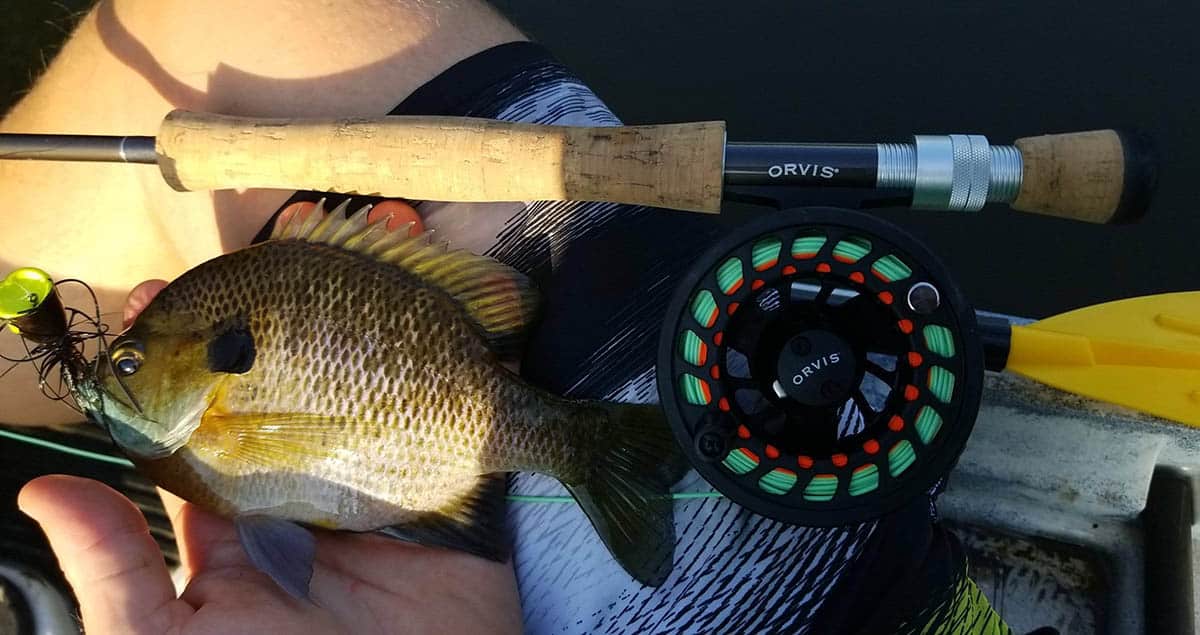
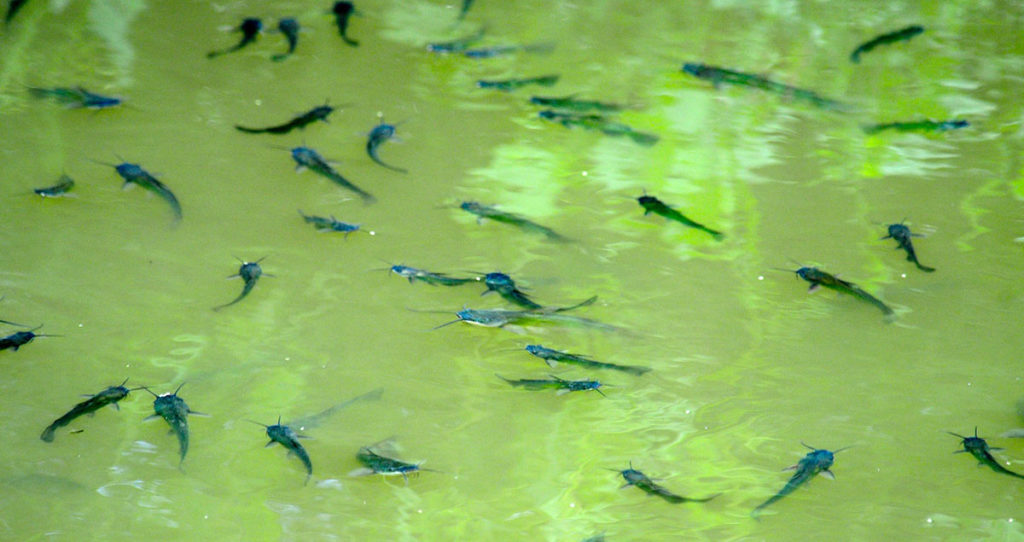
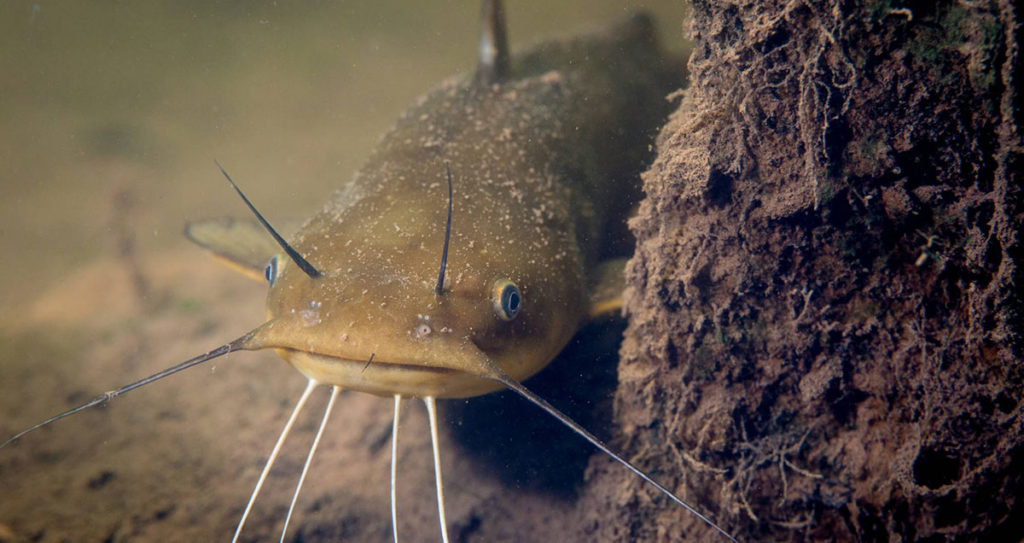
![Which Fish Eat Bluegill, Sunfish, and Other Bream? [Answered]](https://getoutdoorssouth.com/wp-content/uploads/2022/12/bass-eats-bluegill-1024x542.jpg)
